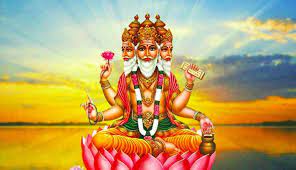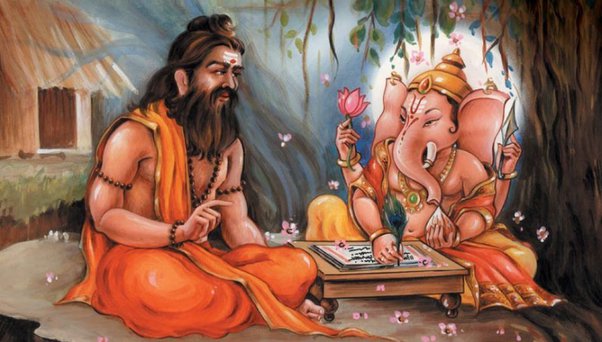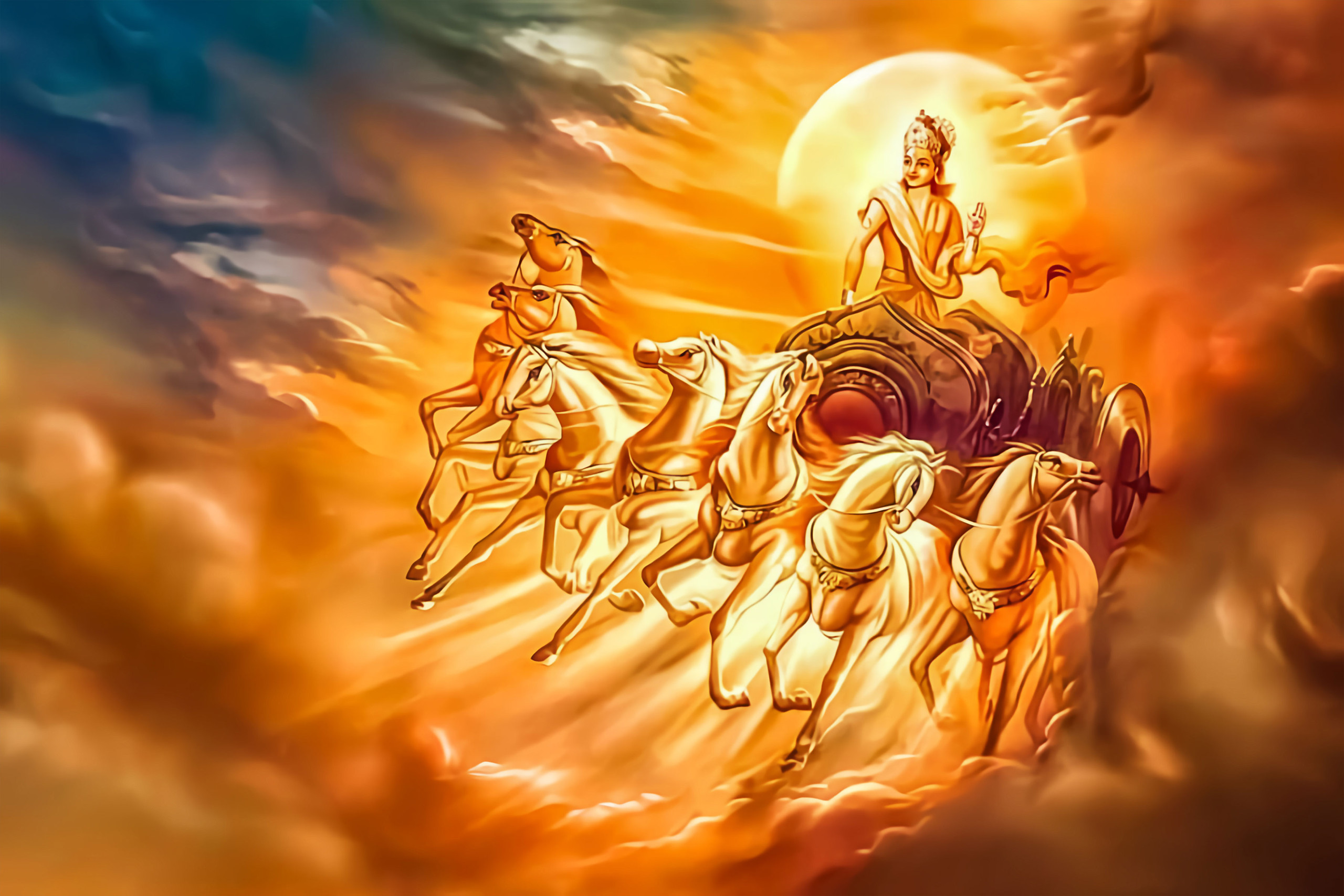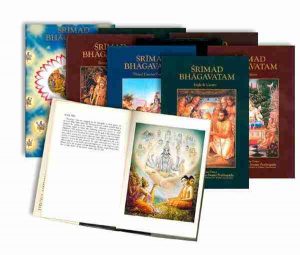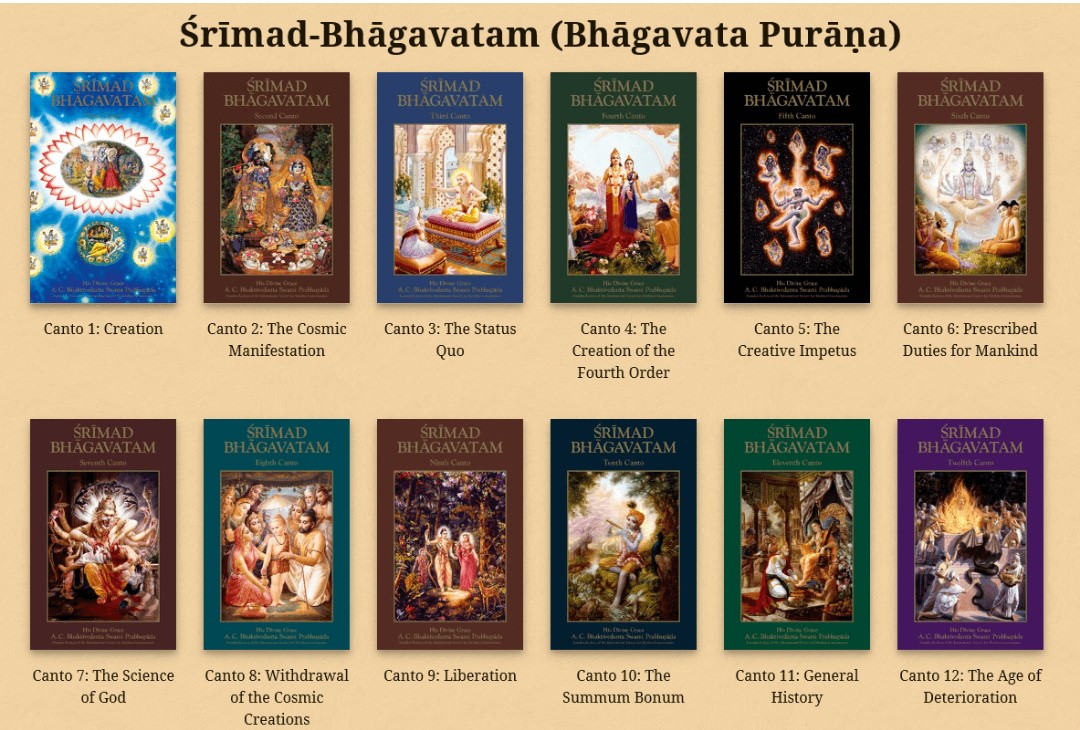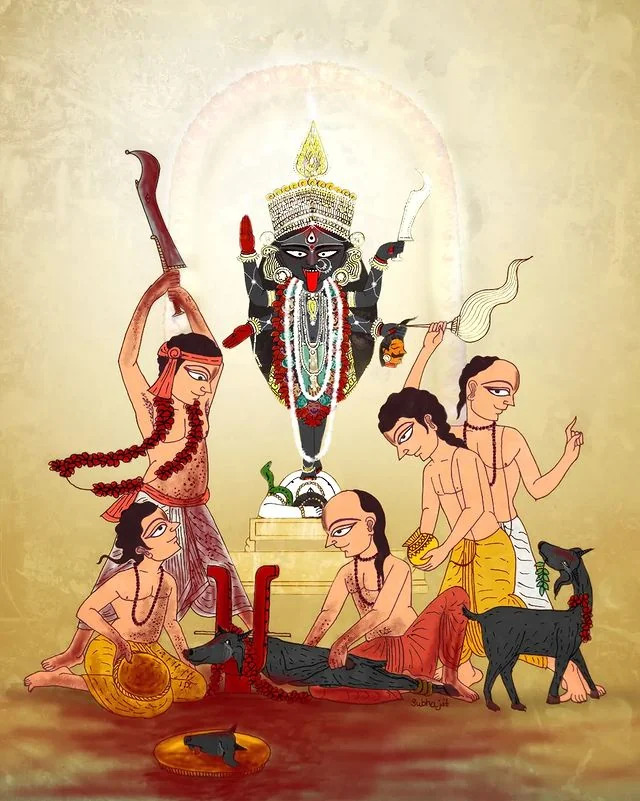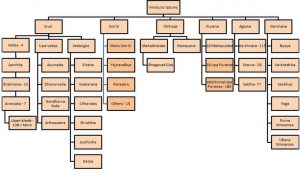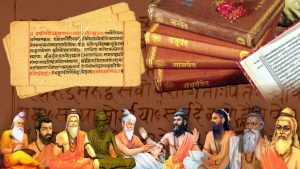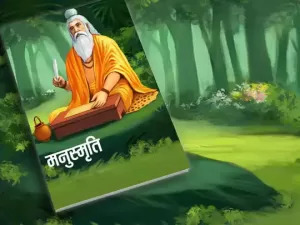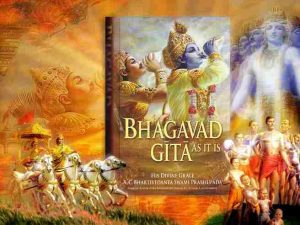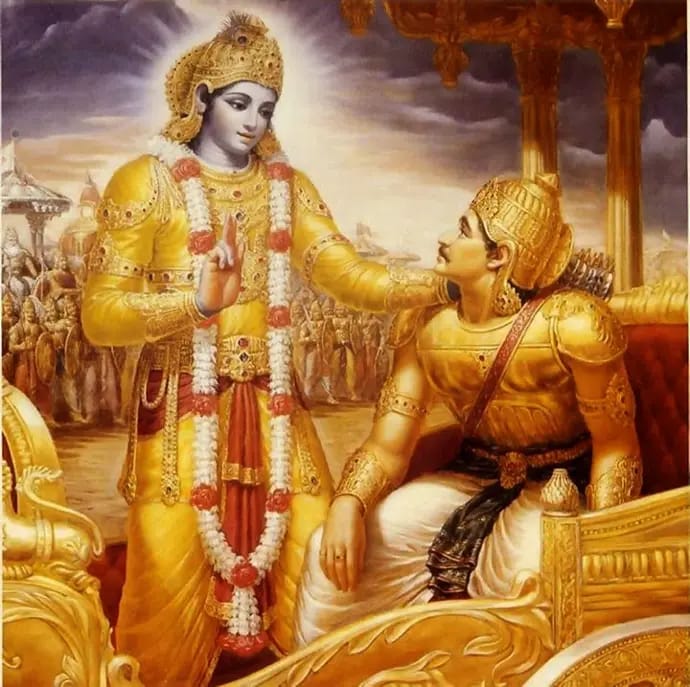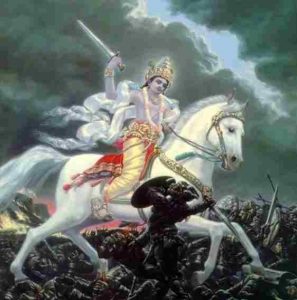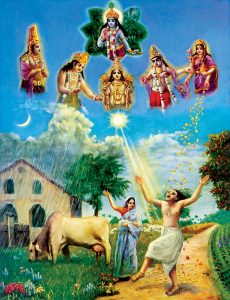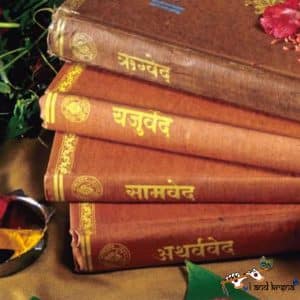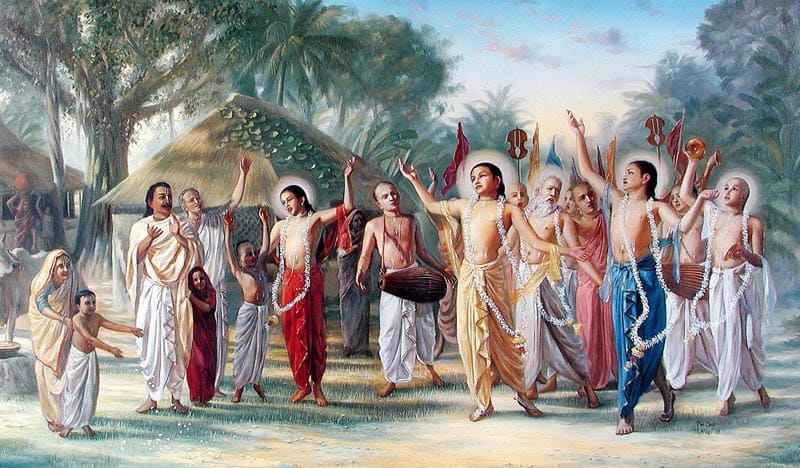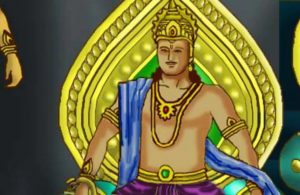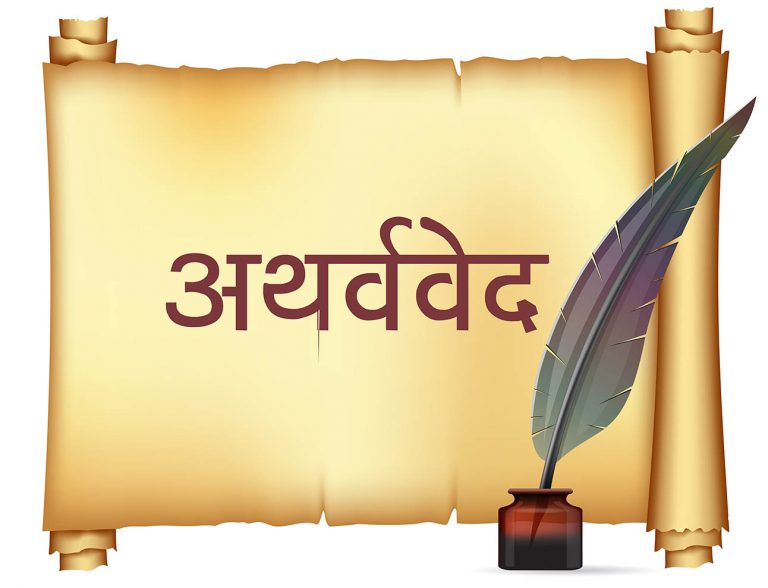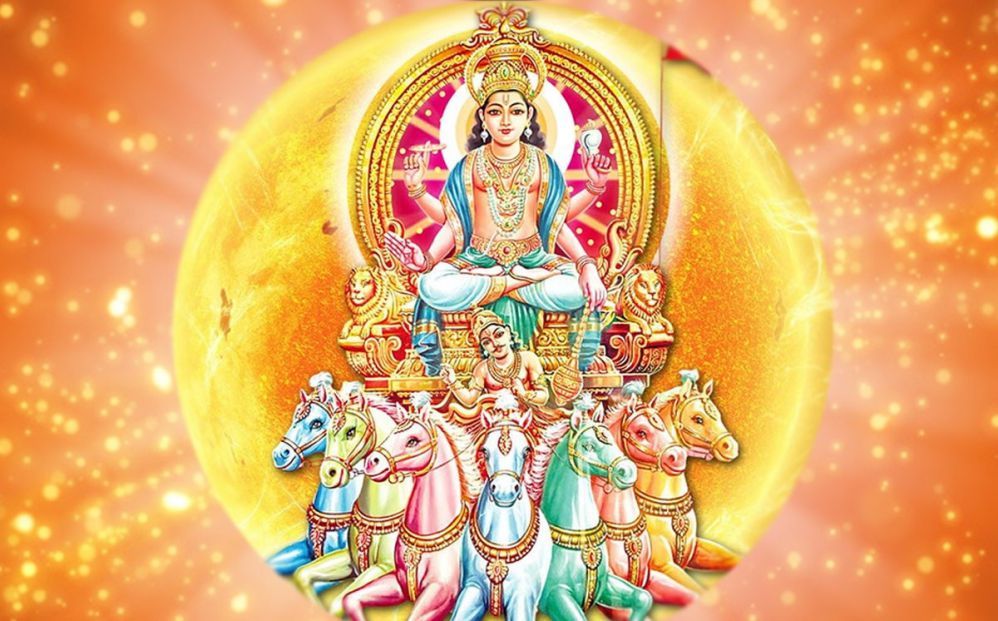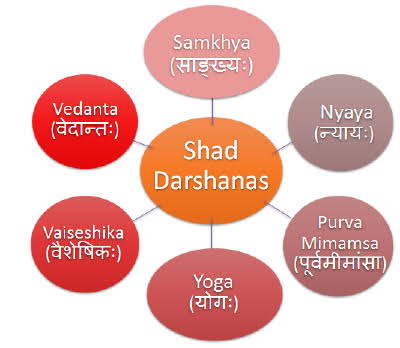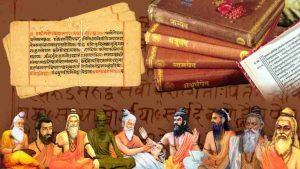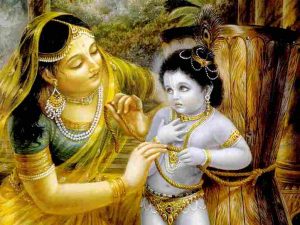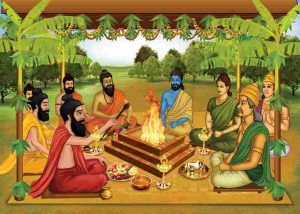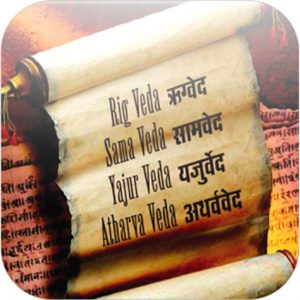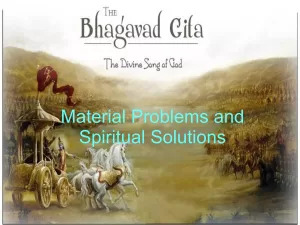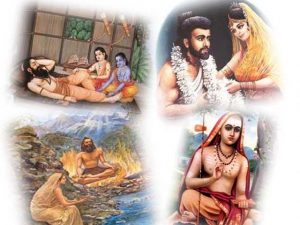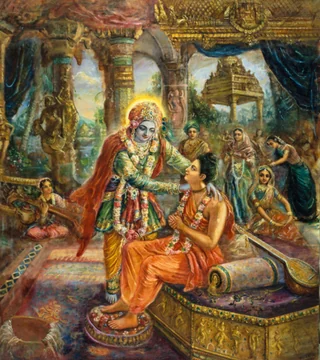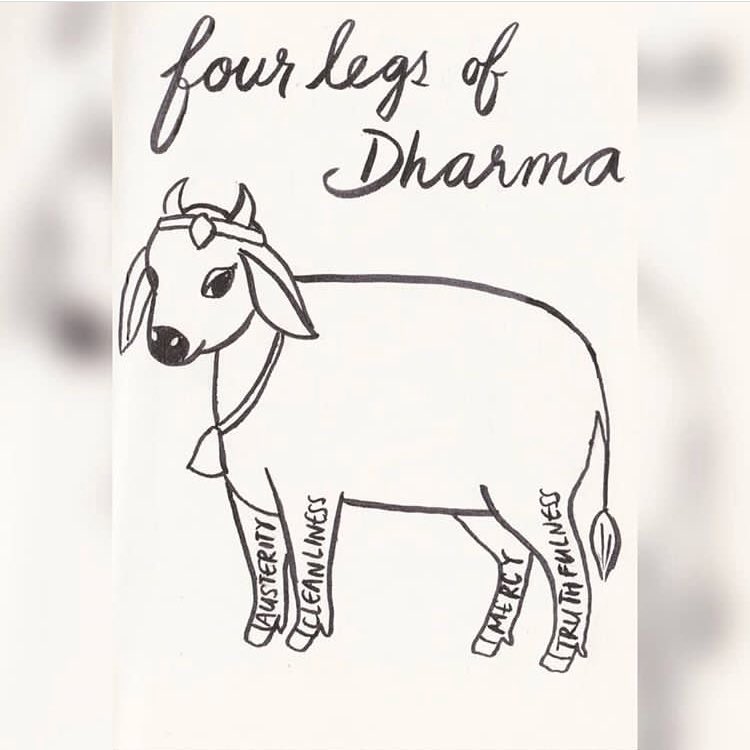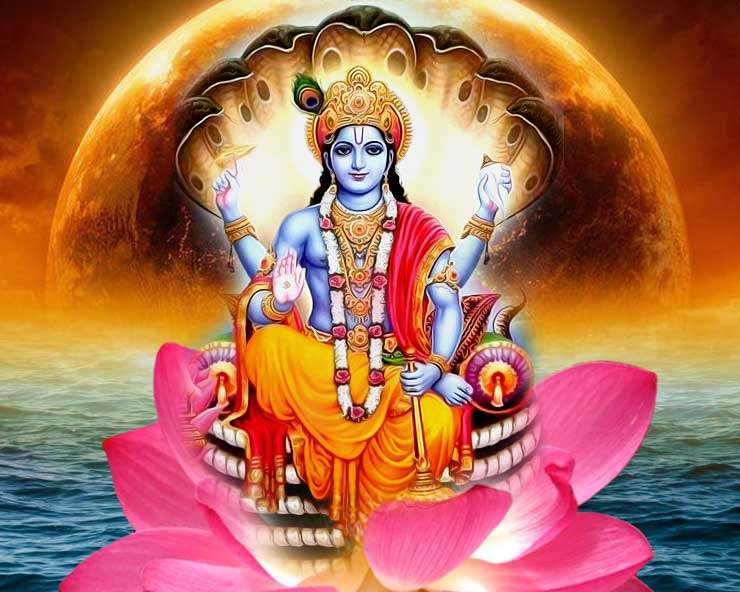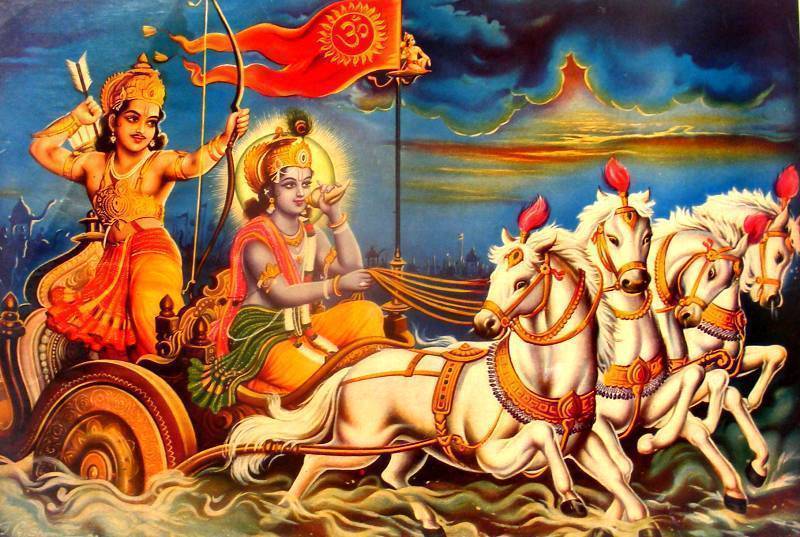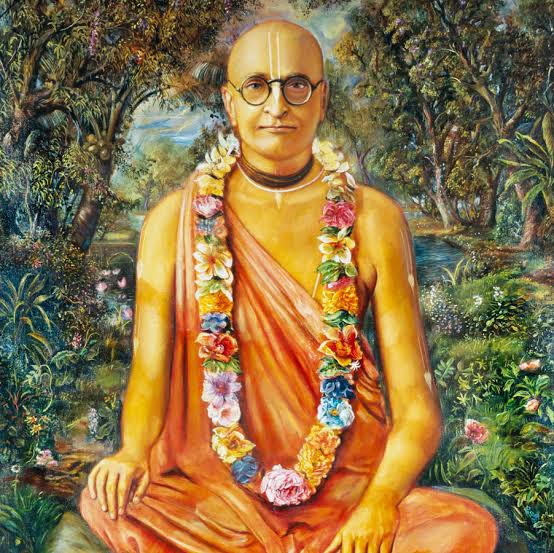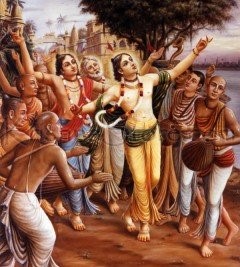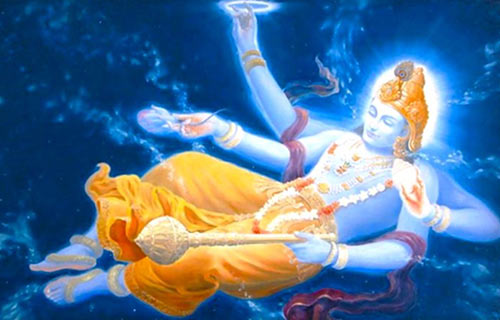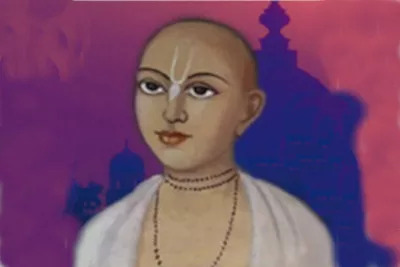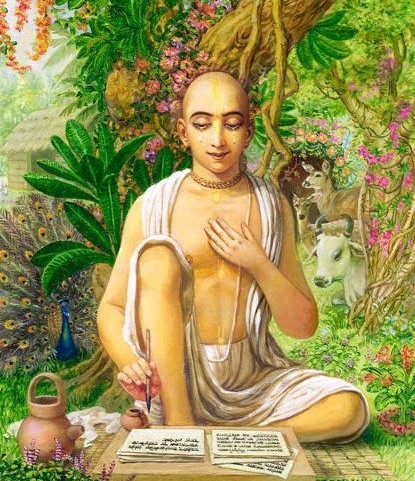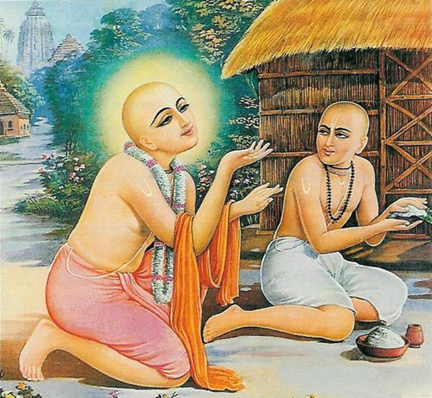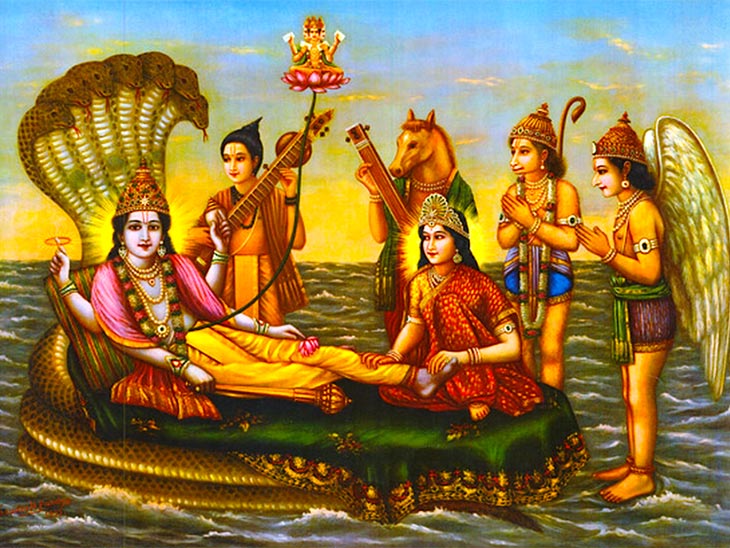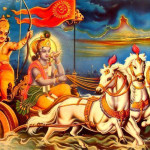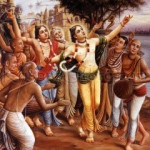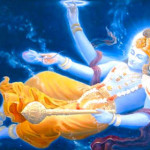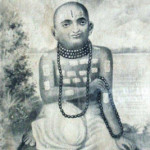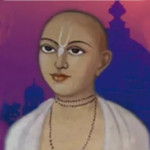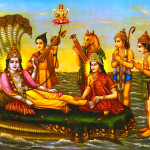Divisions of the Vedas.
From the heart of the topmost demigod, Brahmā, came the subtle transcendental vibration, and from this subtle sound vibration arose the oṁkāra composed of three sounds. The oṁkāra has unseen potencies and manifests automatically within a purified heart. It is the representation of the Absolute Truth in all three of His phases — the Supreme Personality, the Supreme Soul and the supreme impersonal truth. This oṁkāra, ultimately nonmaterial and imperceptible, is heard by the Supersoul without His possessing material ears or any other material senses. The entire expanse of Vedic sound is elaborated from oṁkāra, which appears from the soul, within the sky of the heart. It is the direct designation of the self-originating Absolute Truth, the Supersoul, and is the secret essence and eternal seed of all Vedic hymns. The senses of a sleeping person do not function until he has awakened. Therefore, when a sleeping person is awakened by a noise, one may ask, “Who heard the noise?” The words supta-śrotre in this verse indicates that the Supreme Lord within the heart hears the sound and awakens the sleeping living entities. The Lord’s sensory activities always function on a superior level. Ultimately, all sounds vibrate within the sky, and in the internal region of the heart there is a type of sky meant for the vibration of Vedic sounds. The seed, or source, of all Vedic sounds is the oṁkāra. This is confirmed by the Vedic statement om ity etad brahmaṇo nediṣṭhaṁ nāma. The full elaboration of the Vedic seed sound is Śrīmad-Bhāgavatam, the greatest Vedic literature. Oṁkāra exhibited the three original sounds of the alphabet — A, U and M. These three, O most eminent descendant of Bhṛgu, sustain all the different threefold aspects of material existence, including the three modes of nature, the names of the Ṛg, Yajur and Sāma Vedas, the goals known as the Bhūr, Bhuvar and Svar planetary systems, and the three functional platforms called waking consciousness, sleep and deep sleep. From that oṁkāra Lord Brahmā created all the sounds of the alphabet — the vowels, consonants, semivowels, sibilants and others — distinguished by such features as long and short measure. All-powerful Brahmā made use of this collection of sounds to produce from his four faces the four Vedas, which appeared together with the sacred oṁkāra and the seven vyāhṛti invocations. His intention was to propagate the process of Vedic sacrifice according to the different functions performed by the priests of each of the four Vedas. Brahmā taught these Vedas to his sons, who were great sages among the brāhmaṇas and experts in the art of Vedic recitation. They in turn took the role of ācāryas and imparted the Vedas to their own sons Marīci and others, who were all saintly leaders of the brāhmaṇa community. In this way, throughout the cycles of four ages, generation after generation of disciples — all firmly fixed in their spiritual vows — have received these Vedas by disciplic succession. At the end of each Dvāpara-yuga the Vedas are edited into separate divisions by eminent sages. Observing that people in general were diminished in their life span, strength and intelligence by the influence of time, great sages took inspiration from the Personality of Godhead sitting within their hearts and systematically divided the Vedas. O brāhmaṇa, in the present age of Vaivasvata Manu, the leaders of the universe, led by Brahmā and Śiva, requested the Supreme Personality of Godhead, the protector of all the worlds, to save the principles of religion. O most fortunate Śaunaka, the almighty Lord, exhibiting a divine spark of a portion of His plenary portion, then appeared in the womb of Satyavatī as the son of Parāśara. In this form, named Kṛṣṇa Dvaipāyana Vyāsa, he divided the one Veda into four. When Lord Brahmā first spoke the four Vedas with his four mouths, the mantras were mixed together like an unsorted collection of various types of jewels. Śrīla Vyāsadeva sorted the Vedic mantras into four divisions (saṁhitās), which thus became the recognizable Ṛg, Atharva, Yajur and Sāma Vedas. The most powerful and intelligent Vyāsadeva called four of his disciples, O brāhmaṇa, and entrusted to each of them one of these four saṁhitās. Śrīla Vyāsadeva taught the first saṁhitā, the Ṛg Veda, to Paila and gave this collection the name Bahvṛca. To the sage Vaiśampāyana he spoke the collection of Yajur mantras named Nigada. He taught the Sāma Veda mantras, designated as the Chandoga-saṁhitā, to Jaimini, and he spoke the Atharva Veda to his dear disciple Sumantu.
Source: A.C. Bhaktivedanta Swami Prabhupada (2014 edition), “Srimad Bhagavatam”, Twelth Canto, Chapter 06 – Introduction & Text 39 to 53

